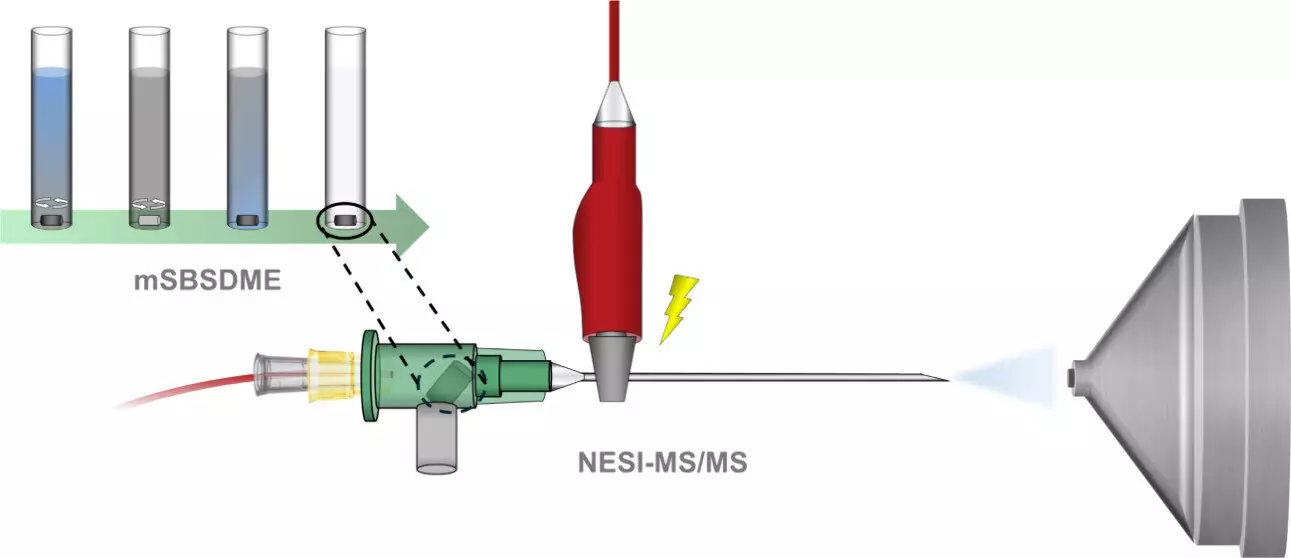Cannabis is the most extensively used illicit substance across Europe, with approximately 8% of adults reported to have consumed it in 2022. This surge in usage is not merely a statistic; it embodies a complex social issue intertwined with health risks, legal dilemmas, and public policy challenges. To mitigate these impacts, especially concerning public safety and health, there is an urgent need for effective monitoring methods that can provide rapid and accurate assessments of substances like THC (Tetrahydrocannabinol) found in cannabis. Enter a groundbreaking solution from the universities of Cordoba and Valencia—a method that could redefine the standard in drug testing by using saliva as a sample medium.
Innovative Methodology: Combining Forces for a Better Tomorrow
The collaboration between two esteemed institutions, the University of Cordoba and the University of Valencia, has birthed an innovative analytical technique that leverages a saliva sample of just 0.25 mL to detect THC. Traditional testing methods often require larger volumes and present delays that hinder timely decisions in critical scenarios like traffic stops, workplace testing, or medical evaluations. Utilizing a technique called dispersive microextraction by sorption, this new approach drastically simplifies the process.
The research team has skillfully designed a system where THC extraction occurs rapidly within just two steps, a significant improvement over the conventional five-step procedures. The high efficiency of their method stems from the integration of a miniaturized stirrer bar equipped with magnetic properties, which effectively creates a vortex that enhances the extraction of THC from saliva. This accelerated analysis does not compromise on accuracy, an essential parameter when considering the legal and social implications of drug testing.
Technical Breakthrough: The Mechanics Behind the Method
At the core of this innovative process is the synergy of material science and analytical chemistry. The researchers employ the ferromagnetic properties of a specially developed extraction material that interacts directly with the THC molecules. When the magnetic stirrer is engaged, it induces a whirlwind effect, promoting the interaction of the extraction material with the molecules in the saliva sample. This method allows THC to be isolated quickly, providing results that could potentially match the urgency required in field testing scenarios.
After the initial extraction, the second phase involves transferring this magnetized particle to a specially designed stainless steel needle, which is then subjected to a high-voltage environment. By introducing an organic solvent that breaks the bond between the extractant and THC, the researchers can create an electrospray for mass spectrometry analysis. It’s a sophisticated dance of chemistry that mirrors the meticulous artistry required in innovative scientific work.
Implications for Public Health and Safety
The introduction of this rapid, reliable, and non-invasive testing method carries far-reaching implications for public health policies and law enforcement. Traditional drug testing methods are often criticized for their turnaround times, which can result in delays that impact decisions about driving or employment. With the emergence of this new technology, these critical decisions could be supported by real-time data, providing law enforcement and health officials with accurate assessments that could save lives and prevent accidents.
Moreover, the technique presents a unique solution to the growing problem of cannabis-related health concerns, especially as legalization efforts continue to shape the cannabis landscape across Europe and beyond. By ensuring that THC levels can be monitored with precision, public health initiatives can adapt more dynamically to the evolving social behaviors associated with cannabis use.
A Step Towards Modernizing Drug Testing Practices
The combined resources and expertise of the research teams have not only fostered a more efficient detection method but also set a precedent for future innovations in drug testing. The advancements made in this approach could inspire a wave of similar research aimed at addressing other substances that require efficient monitoring.
However, while this method is a significant advancement, it’s crucial to approach the deployment of such technologies with careful consideration of ethical implications, privacy rights, and the balance between enforcement and personal freedoms. Rapid detection methods must be coupled with strong regulations to prevent misuse or legal overreach.
Ultimately, the methodology developed at the universities of Cordoba and Valencia represents not just a scientific triumph but a call to action for stakeholders across sectors to embrace innovation. By doing so, society can foster a culture that prioritizes health, safety, and the responsible management of substances, creating a more informed and proactive approach to drug use in an increasingly complex world.


Leave a Reply